
You’ve Never Seen Flowers as Beautiful as the Ones at This Epic Northern California Farm
A second generation flower farmer and florist harnesses the beauty of blooms to create everlasting works of art while leaning into a legacy flourishing with sustainability.
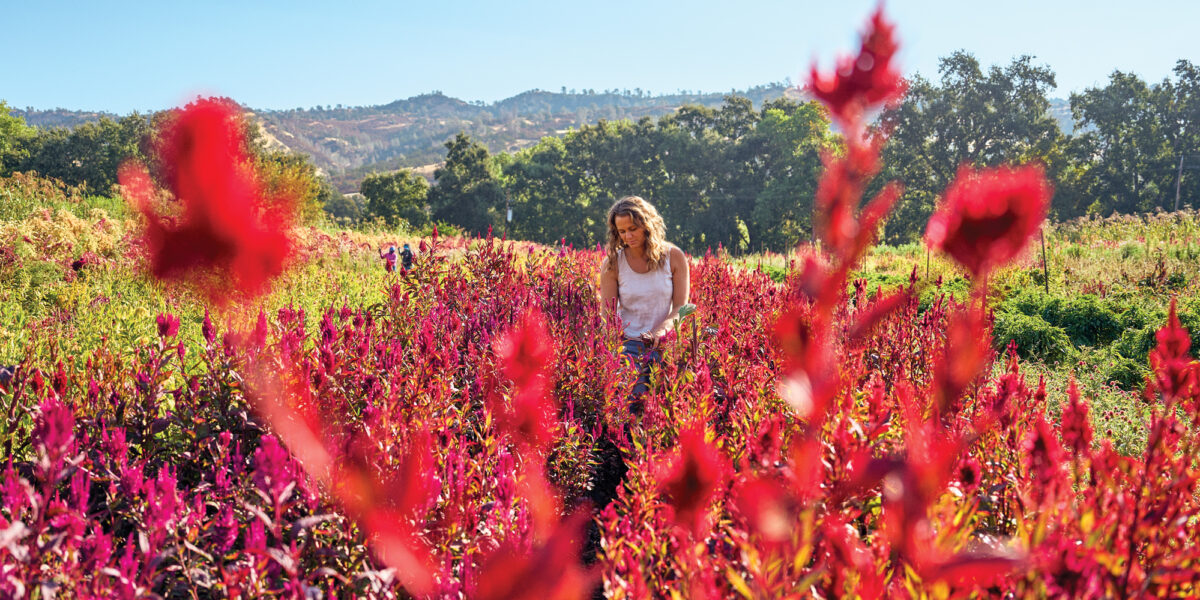
Thomas J. Story
Hannah Rose Rivers Muller is essentially a farmer-florist by birth. She was born at Full Belly Farm, located in the rural, charming Capay Valley of Northern California, and works there to this day. She gained her expertise similarly to how plants absorb water, through osmosis—her skills and knowledge a result of the very soil she was raised on. Here she learned the inner workings of the flower fields, small hands exploring the ground, taking naps in harvest baskets between colorful rows, watching seasons change in vibrancy and texture, and admiring her mother who skillfully nurtured and expanded the flower fields over the decades with care.
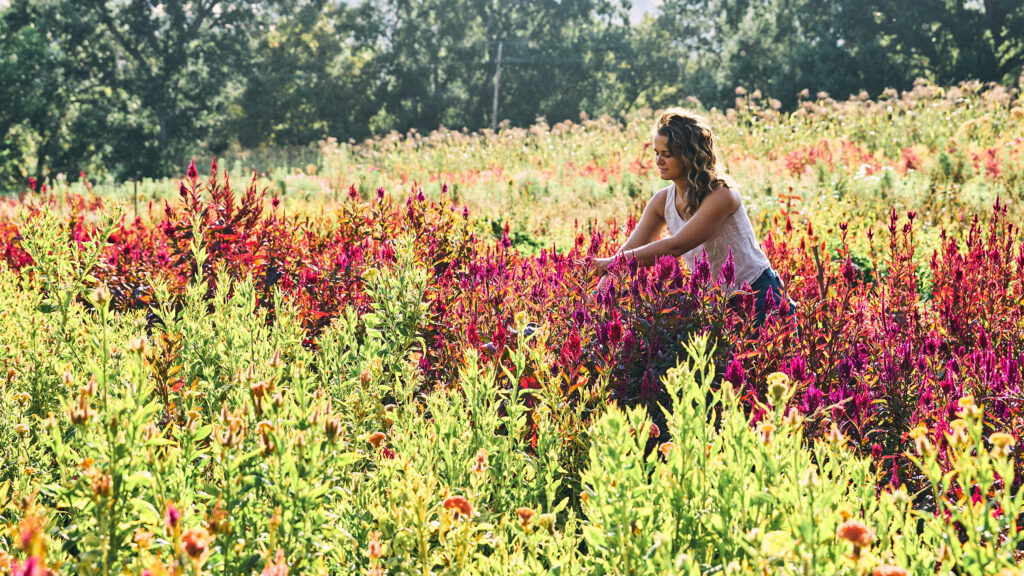
Thomas J. Story
Full Belly Farm grows much more than just flowers, with over 350 acres dedicated to certified organic fruits, vegetables, and livestock. While only fifteen of those acres are devoted to cut flowers, they are Hannah’s entire existence. Growing up at the farm provided a sense of purpose. Over time her childhood play plot became a place of passion that lured her back as an adult. She now works alongside a crew of 80 and is in the process of becoming one of the seven owners.
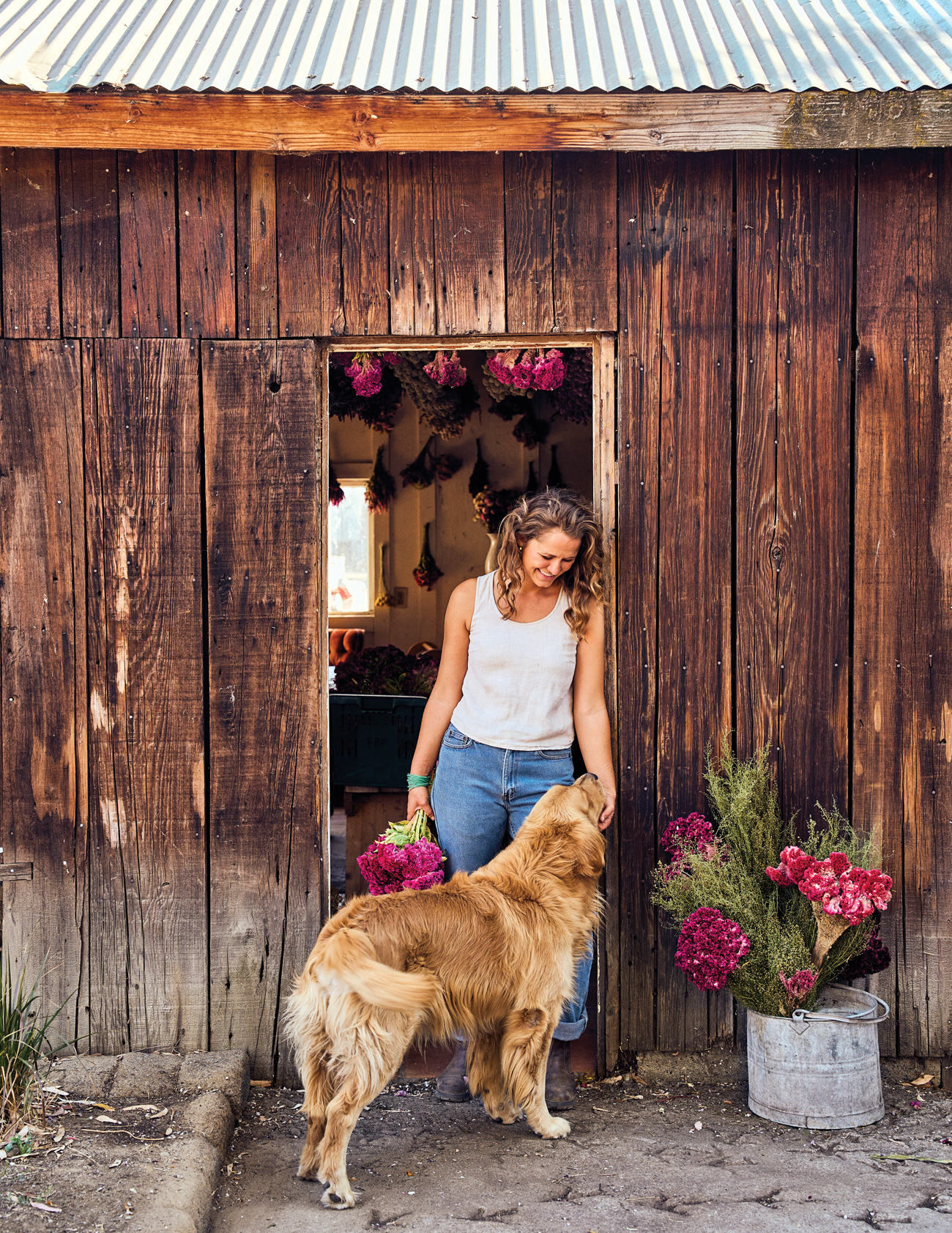
Thomas J. Story
Hannah is well known for pioneering the Northern California field-to-vase movement and for making one-of-a-kind floral arrangements that mimic the surrounding landscape and use the blooms, fruits, and vegetables grown on site. She’s also known for her unparalleled ability to identify and preserve specific blooms for their full everlasting potential and has just released Designing With Dried Flowers, an impressive and gorgeously photographed compendium on the subject. Her online posts chronicling her time in the field and inside the farm’s extremely photogenic “Wreath Room” have garnered her a following of tens of thousands of followers who relish being transported into the glimmering golden light of the now-iconic floral drying barn and inspired by the whimsical forever-flower creations she masterfully composes inside of it. Similar to the dried blooms she tends to and preserves so carefully, her passion to continue a legacy of cultivating and creating at Full Belly Farm runs deeper than any of the roots growing in the field.
Heirlooms with History
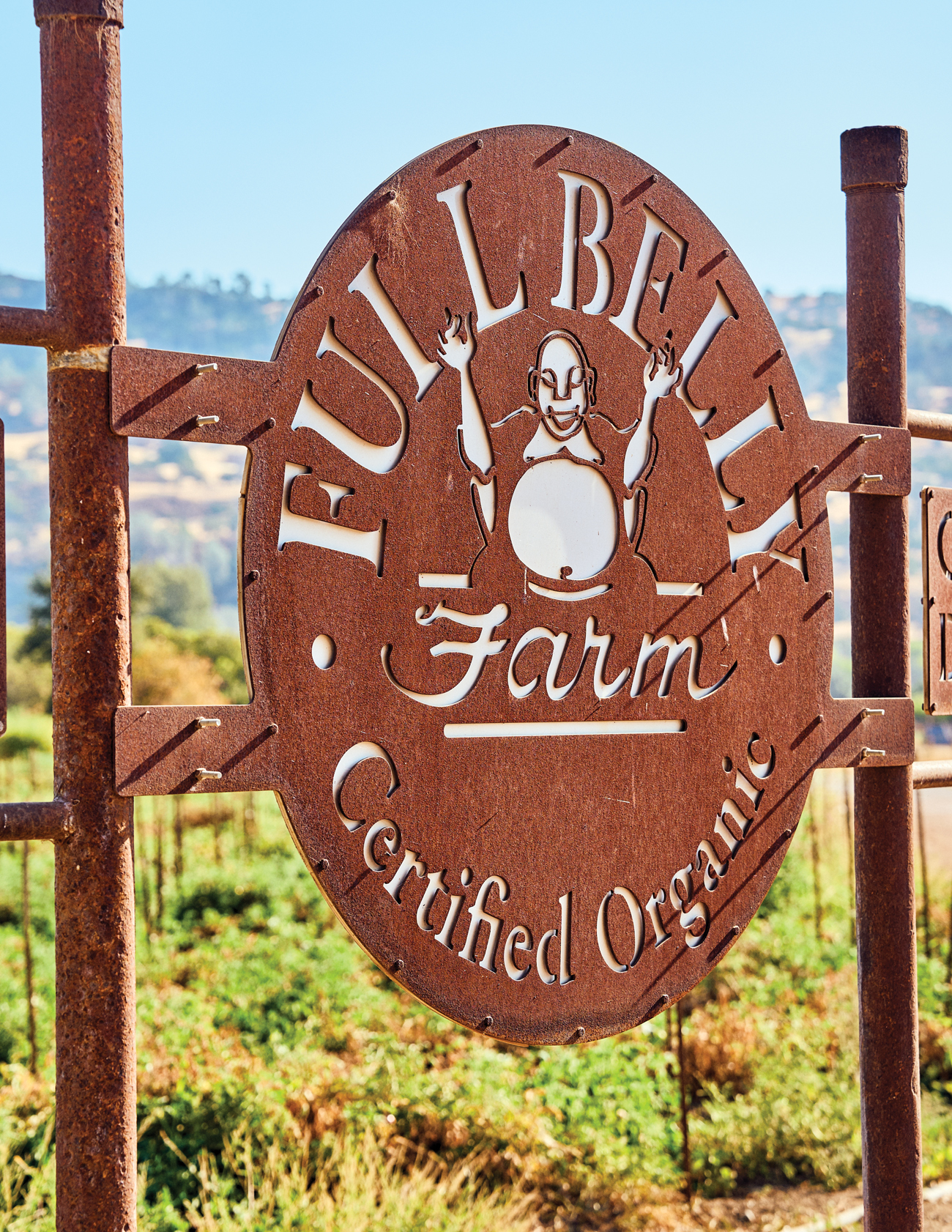
Thomas J. Story
Hannah’s mom, Dru Rivers, was one of the first certified organic farmers in California. She spearheaded the flower industry’s sustainable and locally grown initiatives early on with her exceptional expertise in not only floral design, but in developing proper harvesting techniques that were essential to the success and expansion of Full Belly’s offerings. When Hannah began her floral design business, she knew there was something special about using the organic flowers and produce that were growing together naturally in their fields. Seeing her mother and the farm crew treat each stem with care while harvesting both efficiently and mindfully is still the driving force behind her own work ethic today. The dried flowers have been Hannah’s personal farm project, one which she’s cultivated over the past 10 years. She has spearheaded these dry flower initiatives not only as a more sustainable option for customers, but because it provides year-round employment for the Full Belly crew while maximizing the space used to grow cut flowers.
Farming the Forever Flower

Thomas J. Story
There are three main things the Full Belly crew adheres to when selecting plants for drying: plant material or blooms that hold color, flowers that do not easily shed petals, and specimens that offer a unique shape, texture, or color for arranging. Hannah explains that there is a lot of trial and error, especially when it comes to keeping color, which was the catalyst for writing Designing With Dried Flowers, which provides 40 years of collective experience on the craft. In her book, Hannah beautifully bullets each step of this process, making the art of preservation attainable and exciting. She breaks down each flower from every season and then dives into the role each of these plays for a number of dried flower designs. She has become a master at utilizing forever flowers for full, complex, and unique arrangements and it is quite possibly the most robust and thoughtful floral book recently published.
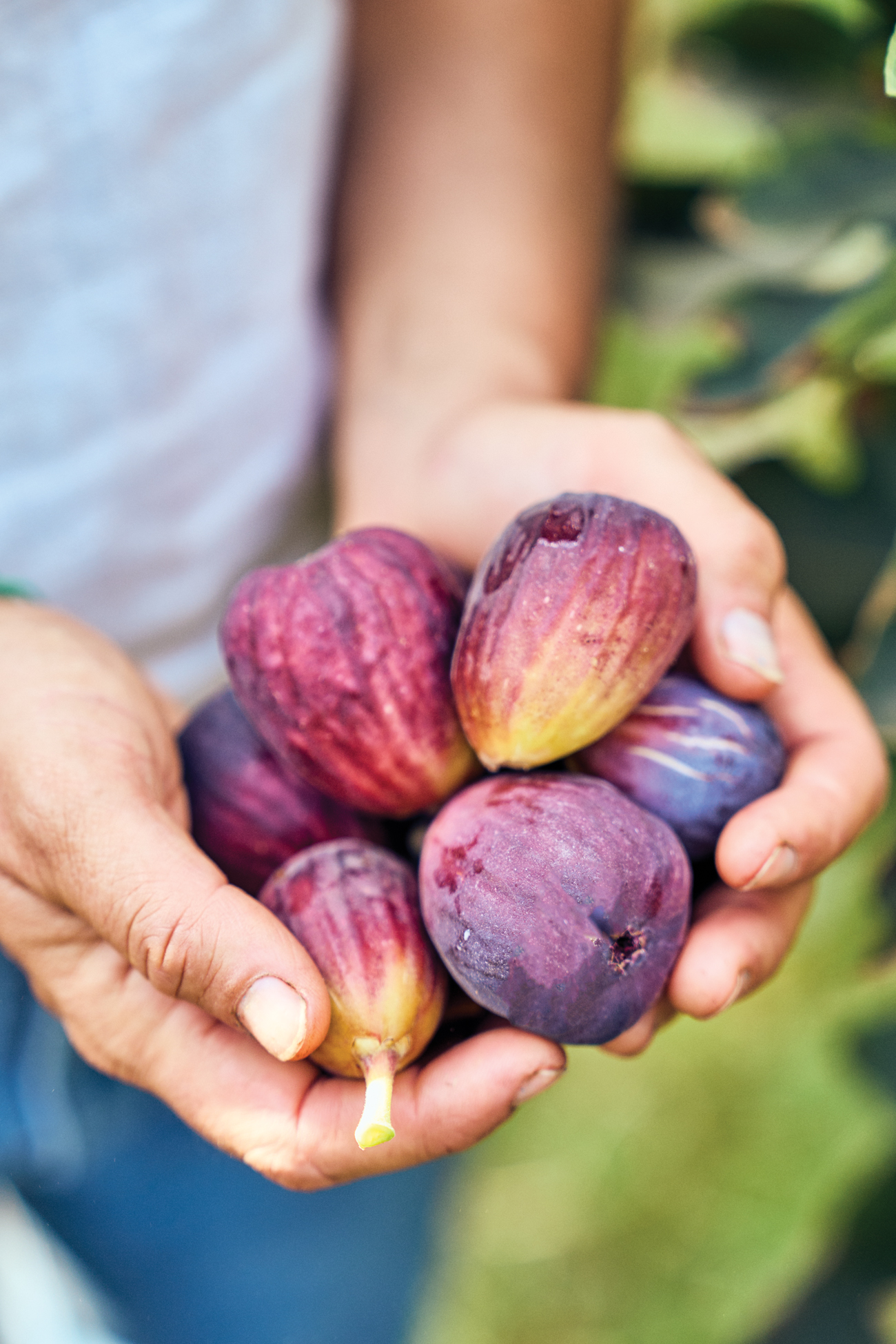
Thomas J. Story
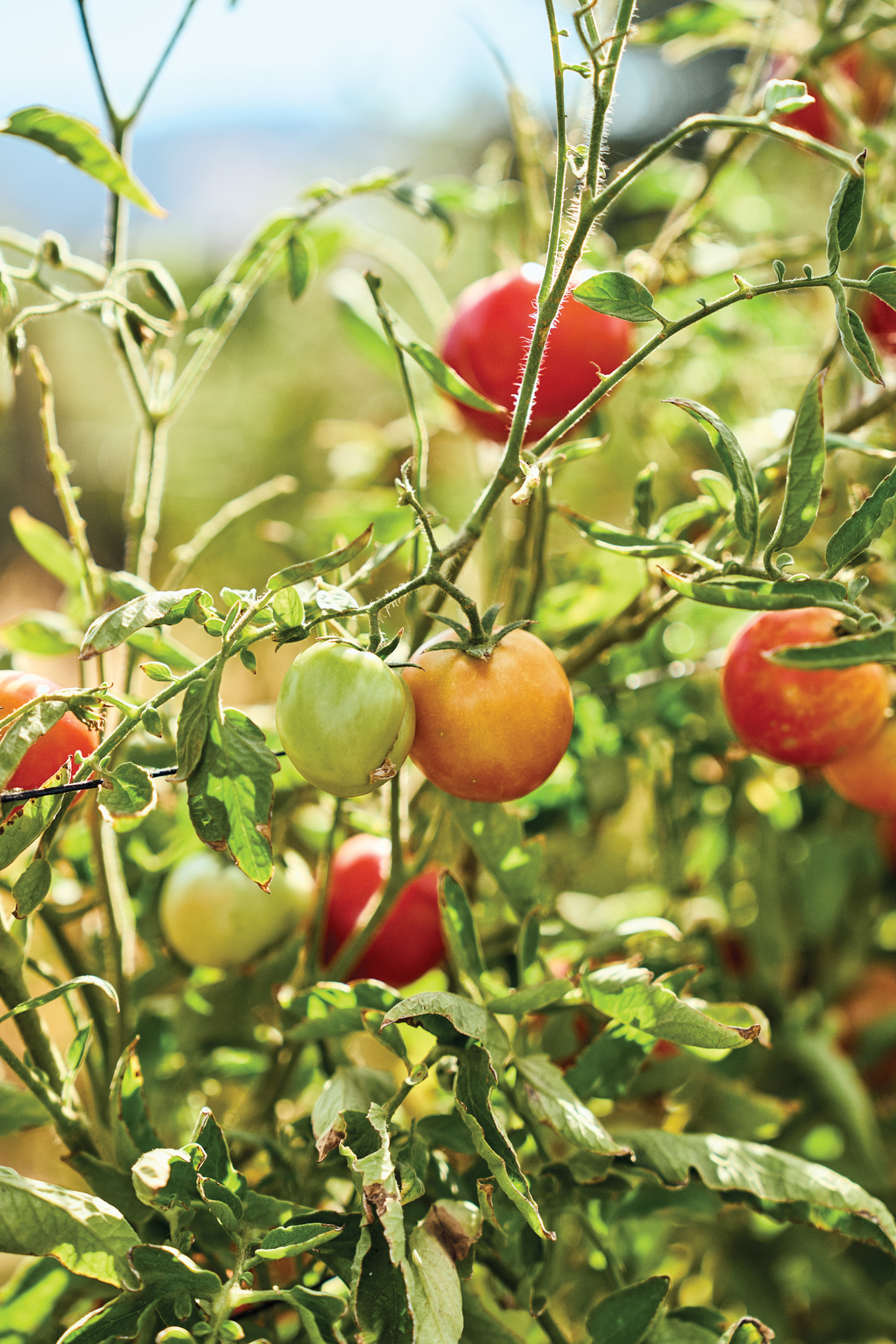
Thomas J. Story
When working, Hannah prefers the natural sounds of the farm in lieu of listening to music or podcasts. The symphony of bees looking for nectar, birds calling to one another, the crew speaking to each other in Spanish, and livestock in neighboring pastures makes her feel present. There is a different mindset when growing flowers for drying versus fresh cut blooms. For example, flowers destined for drying should be harvested when they’ve fully opened their blooms, unlike fresh flowers for arranging. Curiosity and experimentation are also important, such as when certain seasons provide an overabundance of varieties. Sunflowers, zinnias, marigolds, snapdragons, and rudbeckia are all examples of flowers that are now some of Full Belly’s dried stem staples that in the past have were only marketed as fresh-cut blooms. These positive pivots aid in the farm’s ability to innovate and create in new, exciting ways.
The Wreath Room
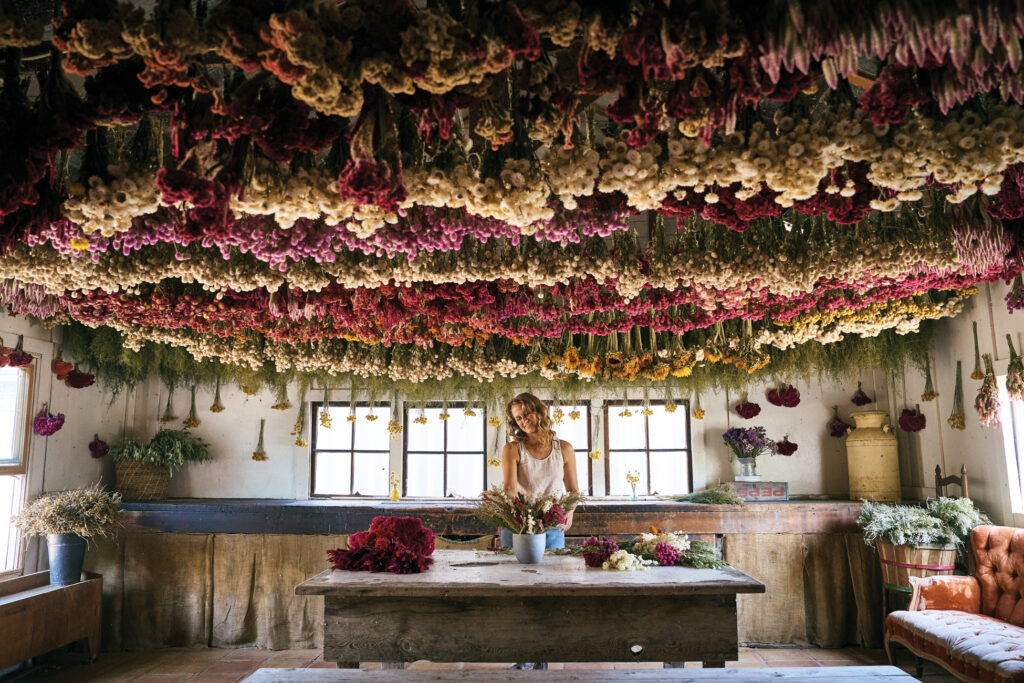
Thomas J. Story
The Wreath Room at Full Belly Farm is an old barn where flowers are dried and countless creations are made. The team practices simple drying methods using wires strung tightly between the ceiling beams and secured with rubber bands. Hannah muses how it changes over the course of the four seasons, sharing how in the spring it is a pastel dreamscape filled with purple and pink larkspur, soft green flax, and wheat with a rainbow of ranunculus. The summer brings bright and punchy hues, long stems of sunflowers, craspedia, strawflower, and statice. She adds how fall feels like “faded velvet,” when the floor becomes riddled with celosia seed, and the dominant colors are a rich mix of burgundy, deep reds, and oranges. Wintertime is a moment of resetting when the team takes down all of the flowers from the wires and cleans the entire room. Emptiness is greeted with excitement and preparation for the growing seasons ahead.
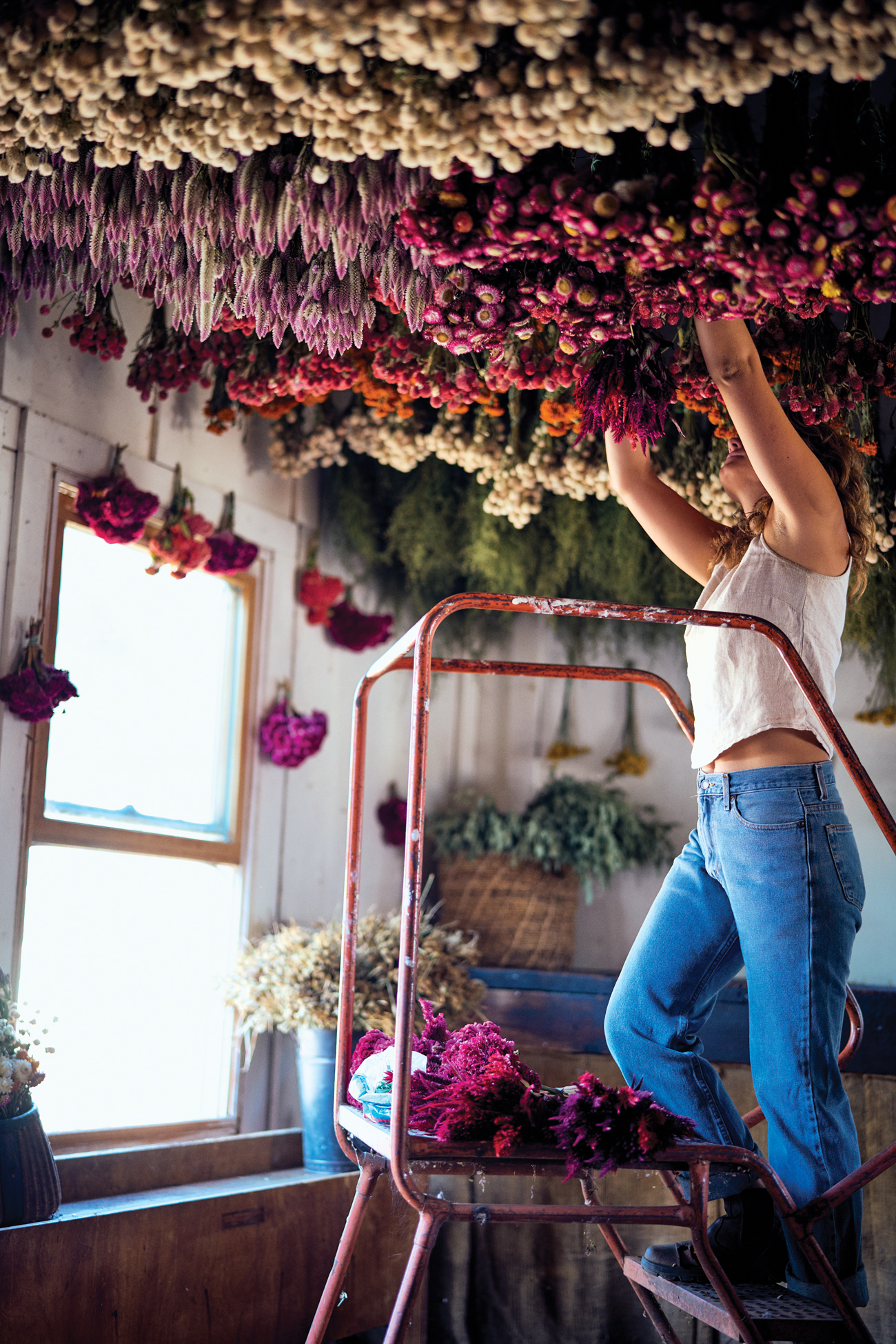
Thomas J. Story
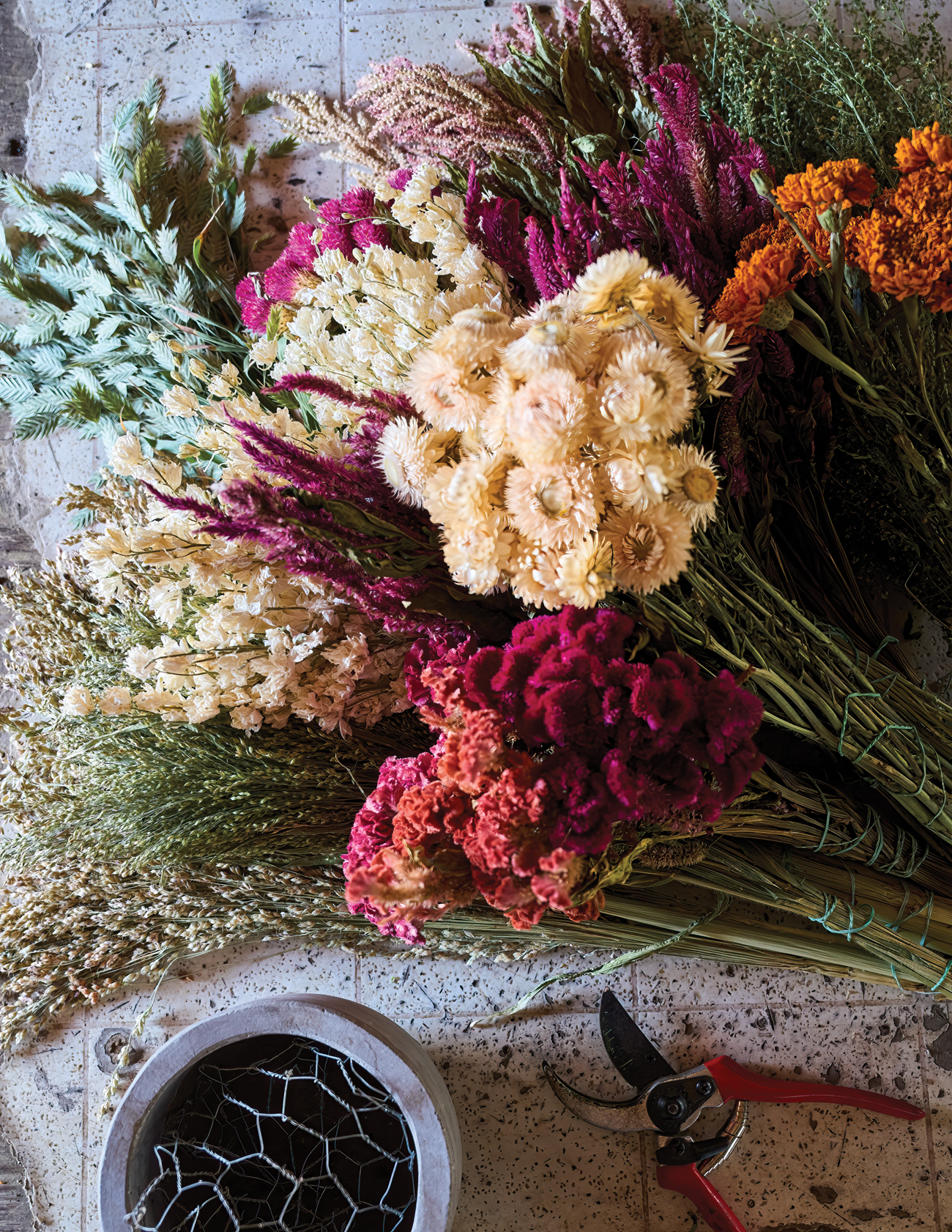
Thomas J. Story
In addition to handling day-to-day flower operations both in the field and creating arrangements for events, weddings, and market sales, Hannah also runs the Full Belly Farm social media accounts, which have brought the Wreath Room some major attention and spotlight. She credits it to being a naturally beautiful space, and how people might be drawn to the calming videos or unique “upside-down garden” qualities. She admits the attention has not changed what they do at the farm, and if anything has encouraged them to grow a bit more. She adds that they started growing flowers for drying long before Instagram (and the internet!) so they will continue to carry on creating their whimsical wreaths and dried arrangements as they have been for the past four decades with commitment and care.
Commitment to Community

Thomas J. Story
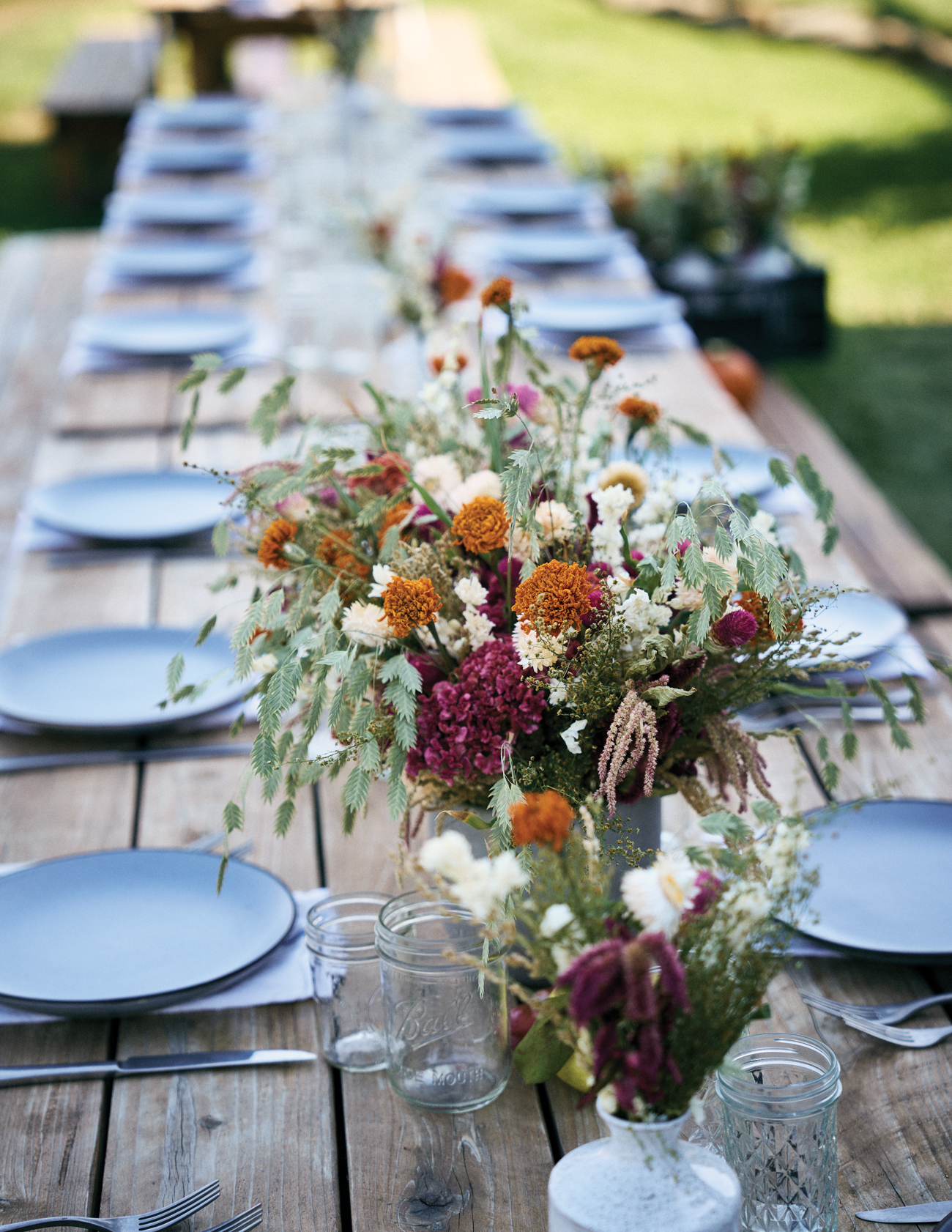
Thomas J. Story
Full Belly Farm has always tried to have an open door policy, hosting a myriad of tours, open farm days, events, and workshops throughout the year. Hannah explains that education was built into the very foundation of their farm. Currently hosting two wreath classes in the fall and winter, Hannah is looking to expand the on-farm floral design classes to provide more field and design experience for those interested in learning about floral farming and design. She beams, confessing there is nothing more rewarding than sharing the farm with others.

Thomas J. Story
The monthly farm dinners are curated by Hannah’s brother Amon Muller and his wife Jenna, who are amazing chefs and offer something incredibly unique and beautiful for visitors. Showcasing the best of the season through food, ambiance, and flowers, these multi-course meals aren’t stuffy or overdone, but grounded in the farmland that everyone is so thrilled to be a part of. Hannah’s self-expression through flowers also weaves into these events. She loves these elevated nights because unlike weddings, there’s a chance to let her imagination run wild, using ingredients that she can’t typically use in their daily bouquets such as fresh fruit, tomatoes on the vine, and tulips that have blown open.
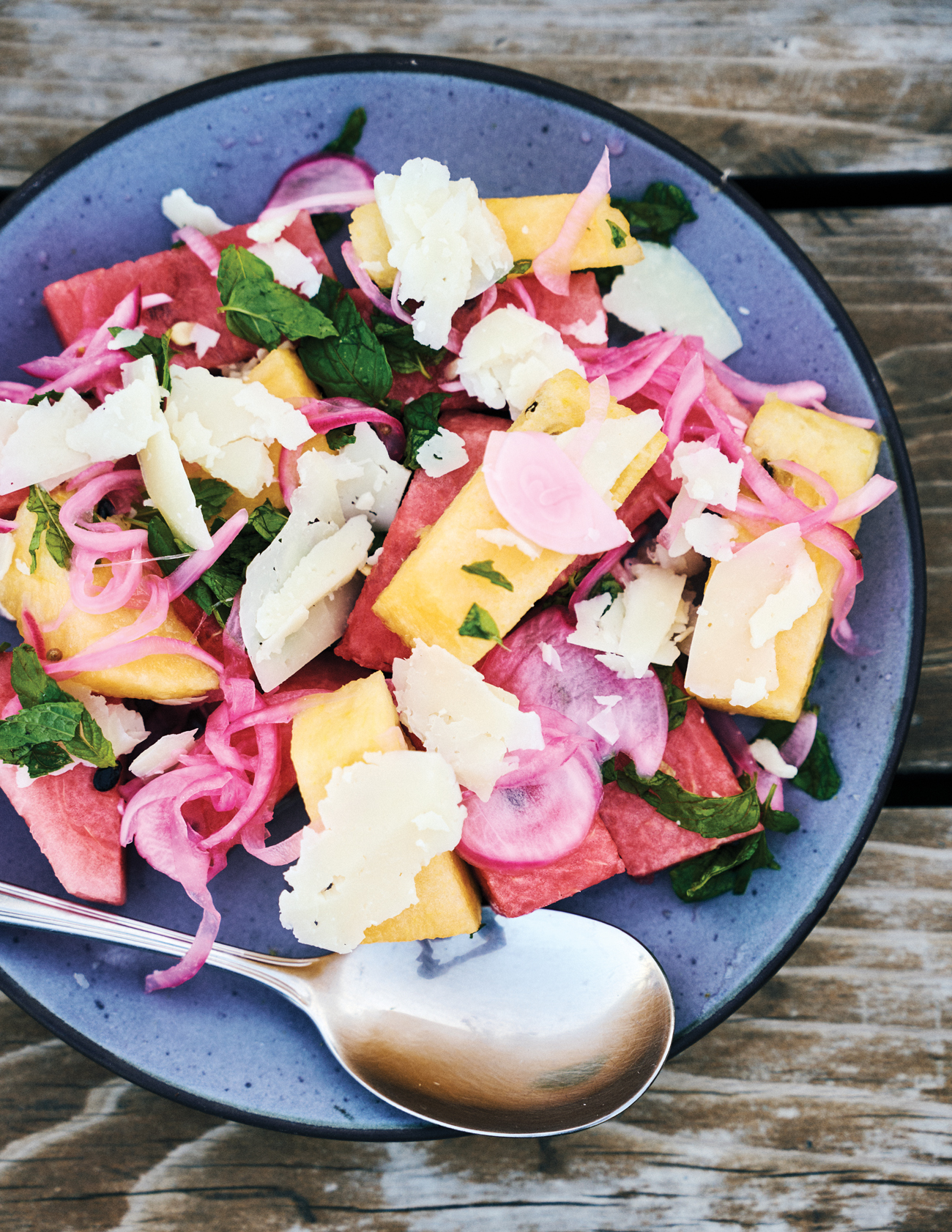
Thomas J. Story
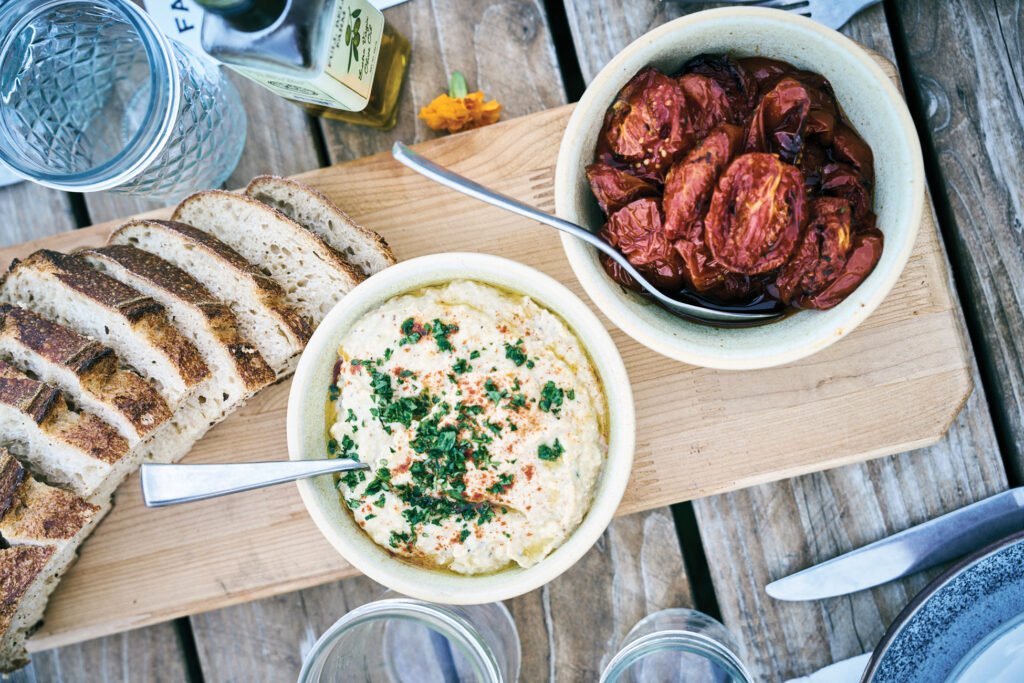
Thomas J. Story
Hannah’s gratitude is profound. She loves witnessing these amazing nights where guests get to experience Full Belly in all its glory. Her dedication and love for this farm goes far beyond familial. It is a celebration of so many people’s devotion and hard work. Hannah’s respect for the land and the team that tends to it prove that leaning into legacy is about curating longevity. It’s about honoring the past that paved the way while shaping the future with the same caring mindset used when cultivating flowers intended to last forever.
